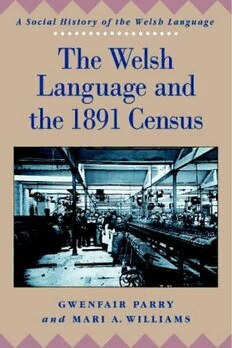
The Welsh Language and the 1891 Census PDF
503 Pages·1999·2.355 MB·
Most books are stored in the elastic cloud where traffic is expensive. For this reason, we have a limit on daily download.
Preview The Welsh Language and the 1891 Census
Description:
The 1891 census was the first to collect information about the language spoken by the people of Wales, and is therefore a particularly reliable source for historians analyzing the socio-economic structure of Weslh- and English-language ability and the process of language change in Wales at the end of the 19th century. This study concentrates on 20 communities, chosen for their geographical, economic and linguistic characteristics which in 1891, accounted for about 5 per cent of the total population of Wales. For each of the selected areas, a detailed picture of the socio-economic pattern of language use has been constructed by examining a range of social variables, such as age, sex, relation to head of household, place of birth and occupation, in relation to the language spoken. Intergenerational language shift, the linguistic influence of extra-family members, and the effects of mixed marriages on language change are investigated, and particular consideration is given to migration streams and the presence of incoming strangers and returning kin.
See more
The list of books you might like
Most books are stored in the elastic cloud where traffic is expensive. For this reason, we have a limit on daily download.
